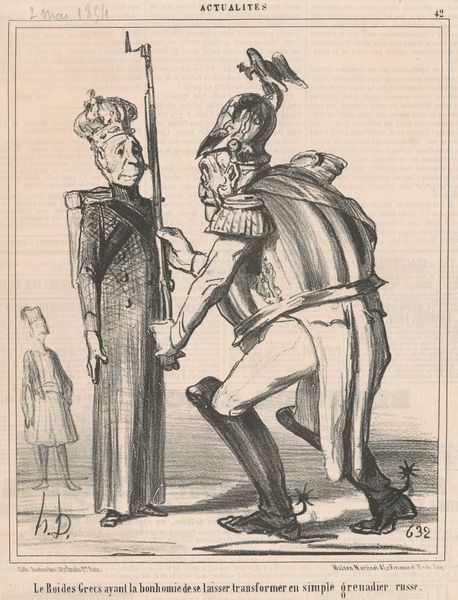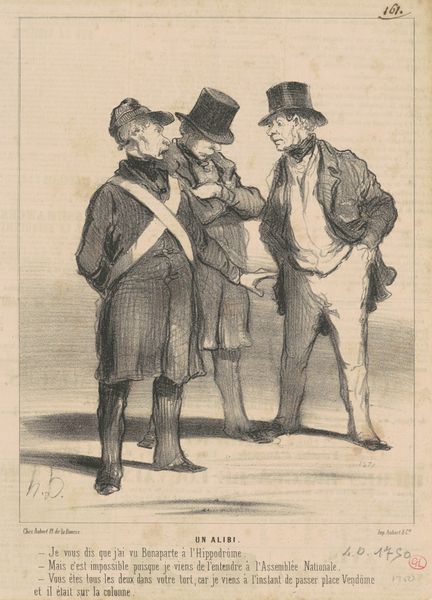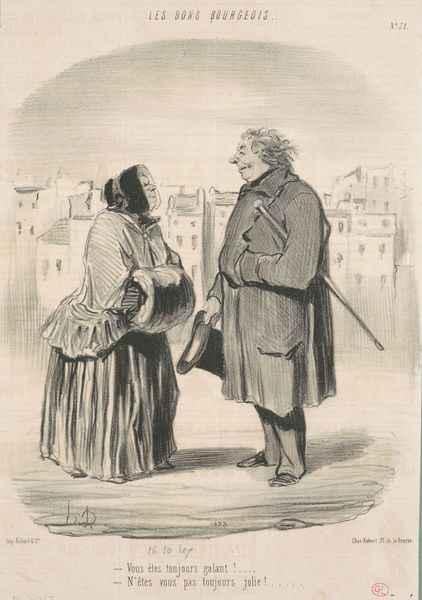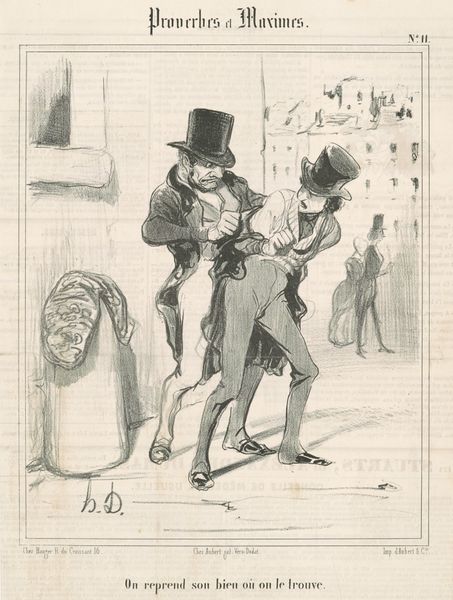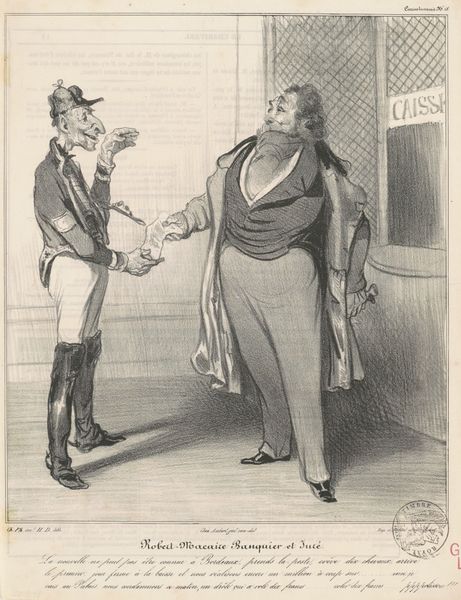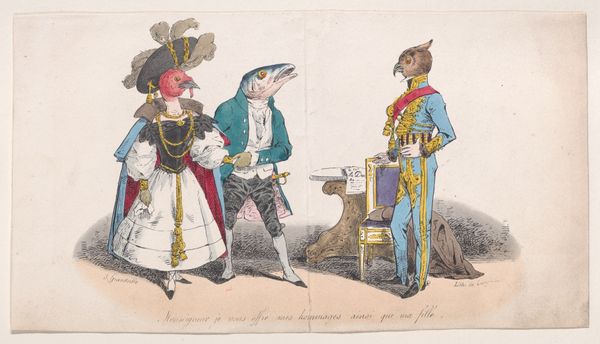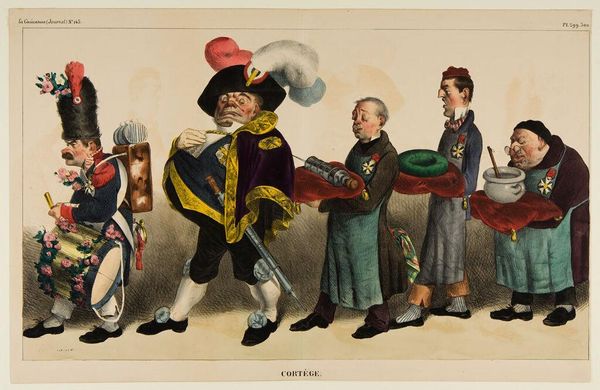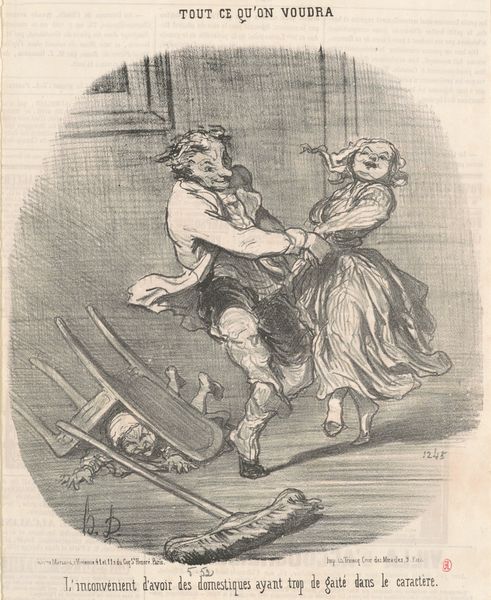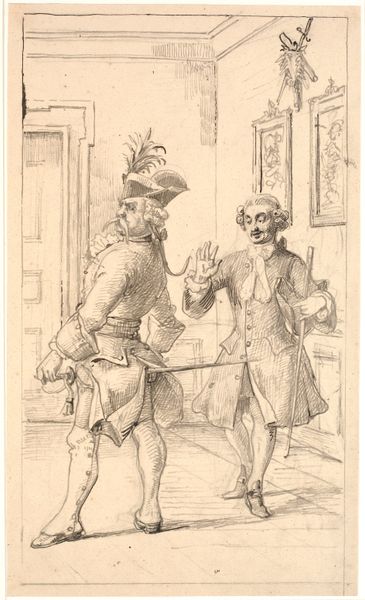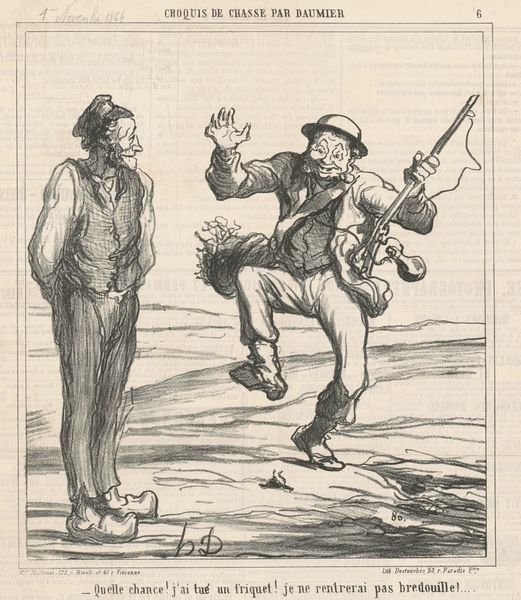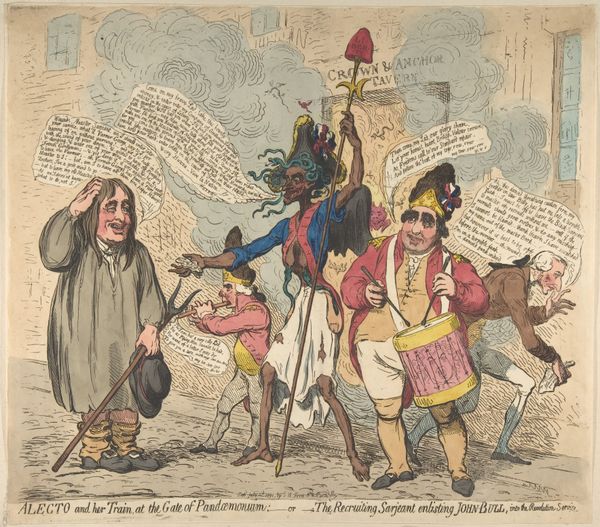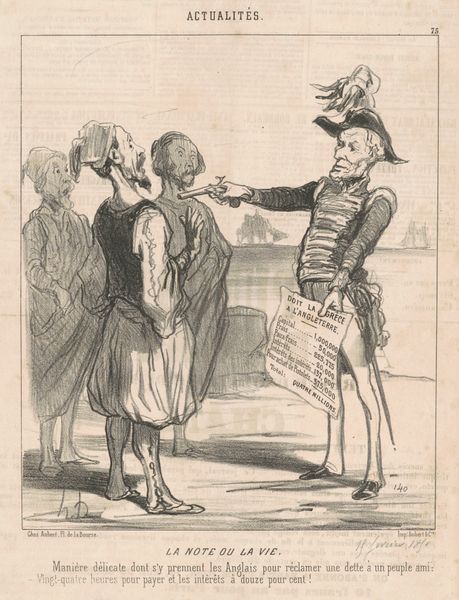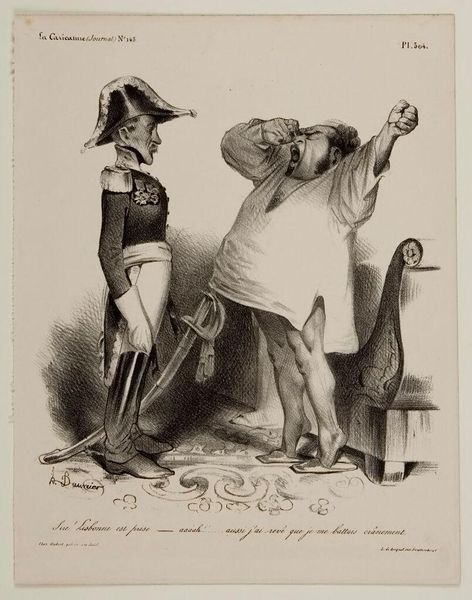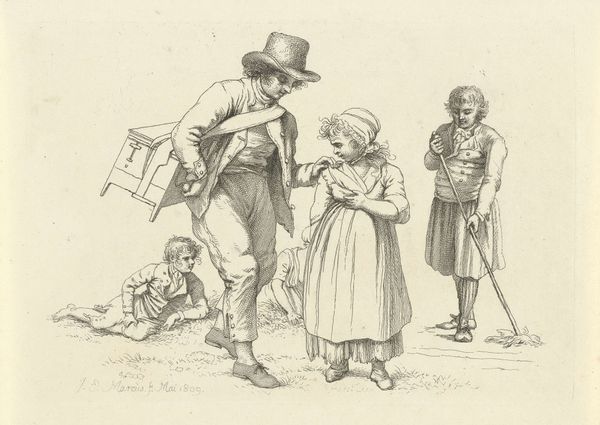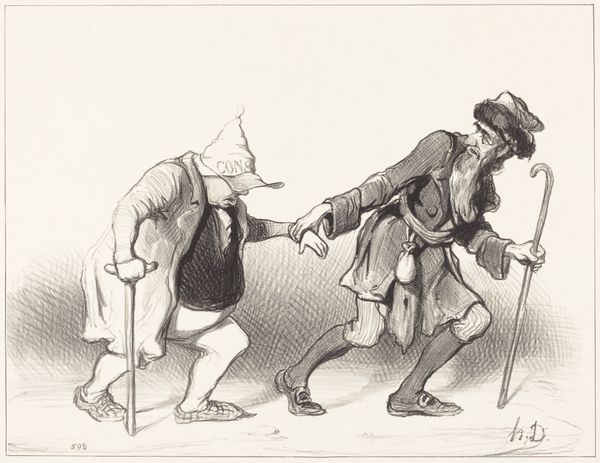
drawing, print, photography, watercolor
#
portrait
#
drawing
# print
#
caricature
#
photography
#
watercolor
#
men
#
watercolour illustration
#
genre-painting
#
history-painting
Dimensions: image: 11 7/16 x 7 7/8 in. (29.1 x 20 cm) sheet: 17 5/8 x 12 1/2 in. (44.8 x 31.7 cm)
Copyright: Public Domain
Curator: Draner's "États-Unis d'Amerique 1865 - Offr. de Dragons," a watercolor illustration currently residing at the Metropolitan Museum of Art, offers a curious depiction. Editor: Indeed. My initial reaction is discomfort, frankly. The stark visual contrast and unbalanced composition create a deeply unsettling atmosphere. Curator: Could you elaborate on that initial reading, perhaps referencing the artist’s chosen composition? Editor: Well, on one side, a meticulously rendered white military officer primps, bathed in soft light. On the other, a Black man— depicted with exaggerated, cartoonish features — is frozen in movement, holding a white cloth. The light, costume, and clear caricature lean heavily into racist tropes prevalent at the time. This isn’t just an image; it's a potent document of unequal power dynamics after the American Civil War, made more complicated by its European production. Curator: I see your point. Shifting from iconography to construction, consider the precise lines in the rendering of the officer's uniform, compared to the looser brushstrokes in the Black man's attire. These aesthetic disparities speak volumes about Draner's focus and technique. The texture and materiality reinforce social position, wouldn't you say? Editor: Precisely! Look at the barber pole lurking in the background. It signifies purported notions of 'service', even forcing a sort of vaudevillian presentation to mask realities and deep racial scars that haunt American History. It’s a deeply complex portrayal. Curator: Interesting observation. It begs the question: How do we approach an artwork whose aesthetic choices intersect, as you suggest, with ethically fraught historical and social contexts? Should the image be judged by formal elements or historical impact? Editor: Both, inextricably intertwined. Analyzing color palettes and lines gives formal clues to artistic construction, yes, but we mustn't ignore the way they become loaded signifiers reinforcing historical trauma. This illustration should challenge, not simply please, our gaze. Curator: It's certainly a stark reminder that studying visual arts compels us to confront uncomfortable histories and to recognize the power inherent in aesthetic representation. Editor: It really emphasizes the ever-important work to acknowledge historical interpretations through different viewpoints and to create ongoing dialogue that’s critical and aware.
Comments
No comments
Be the first to comment and join the conversation on the ultimate creative platform.
